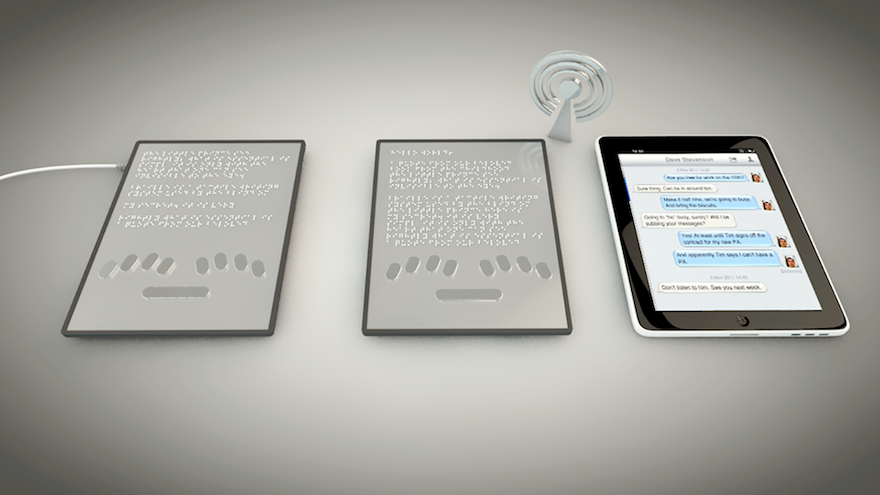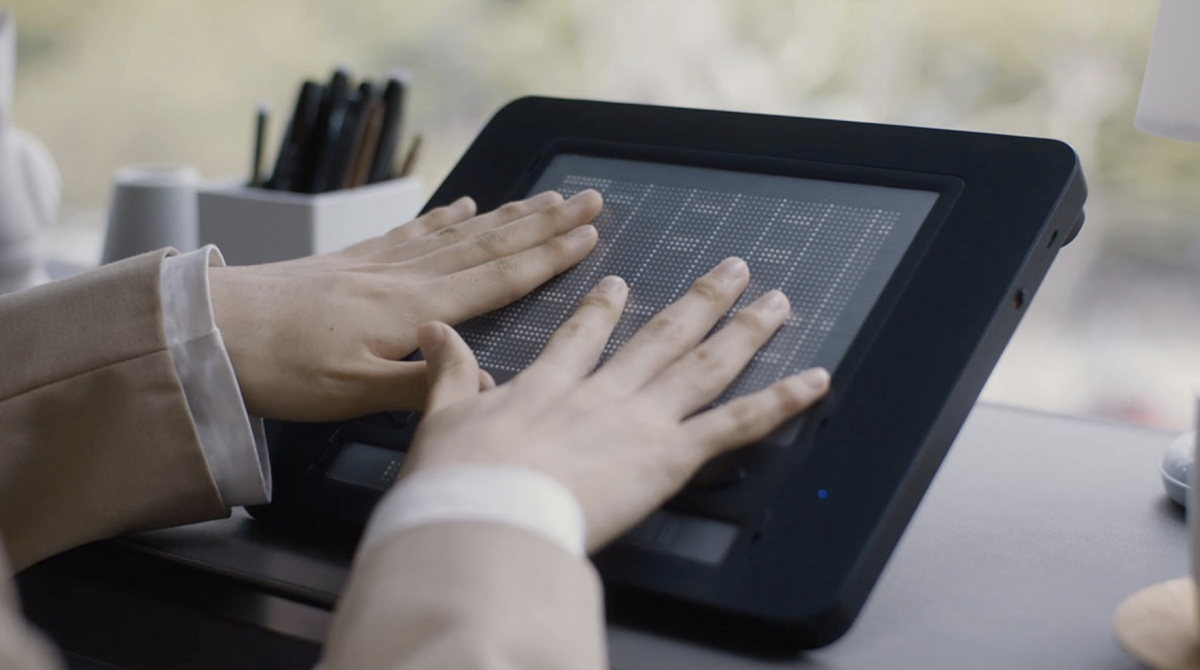Smart Glasses for the Visually Impaired: Advances in Vision Support
Empowering Independence With Assistive Technology for the Blind
The assimilation of assistive modern technology right into the lives of people with visual impairments stands for a considerable advancement in promoting freedom and self-sufficiency. From ingenious screen viewers to sophisticated clever walking sticks, these tools not just boost everyday navigation and interaction but likewise equip individuals to involve meaningfully in various facets of life. As we explore the myriad advantages and real-world applications of these technologies, it ends up being crucial to take a look at the hidden variables that contribute to their performance and the capacity for future growths in this essential area.
Review of Assistive Technology

The advancement of assistive technology is grounded in concepts of inclusivity and empowerment. Developments in software application, equipment, and sensory improvements give individuals with alternatives customized to their particular needs. From screen readers that convert text to speech, to responsive tools that communicate information with touch, these tools transform the method people involve with their surroundings.
In enhancement to practical applications, assistive technology promotes better social inclusion and involvement in different markets, consisting of education and learning and work (Screen readers for the blind). As r & d remain to advance, the potential for assistive technology to further boost the lives of aesthetically impaired individuals stays appealing, leading the means for a much more equitable culture where everyone can prosper
Kinds of Assistive Gadgets
A range of assistive tools have arised to sustain individuals with aesthetic disabilities, each developed to satisfy certain requirements and improve daily functioning. These tools vary from low-tech solutions to state-of-the-art technologies, providing diverse options for individuals.
Low-tech gadgets include magnifiers and large-print materials that aid in reading and writing. Braille tools, such as Braille slates and styluses, make it possible for tactile analysis and interaction. Positioning and movement aids, like white canes, help users browse their setting securely.
On the higher end of the range, digital zoom systems and screen visitors use considerable support. Electronic magnifiers permit individuals to enlarge message and photos on screens, while display readers convert electronic material right into synthesized speech, helping with access to details on smartphones and computer systems.
Smart device applications likewise play a critical function, offering functions like text acknowledgment and navigation aid. Wearable technology, such as smart glasses outfitted with increased fact, is becoming an encouraging tool to boost situational understanding.
Advantages of Assistive Modern Technology
The assimilation of assistive innovation significantly boosts the high quality of life for individuals with aesthetic problems. These technologies encourage users by promoting self-reliance, allowing them to navigate their settings much more properly and do daily tasks with better simplicity. Display viewers and magnifying software enable people to accessibility electronic details, fostering academic and expert opportunities that might have previously been out of reach.
Additionally, assistive devices such as smart canes and general practitioners applications give real-time navigating assistance, enhancing mobility and security. This boosted freedom not just improves self-esteem however likewise motivates social involvement, enabling users to participate more completely in their neighborhoods.
Assistive innovation likewise assists in communication, aiding users connect with others through voice acknowledgment and text-to-speech applications. This capability is important for keeping partnerships and accessing essential details.
Furthermore, the customization alternatives readily available with numerous assistive pediatric eye care technologies ensure that individuals can tailor gadgets to their details requirements, even more improving functionality and performance. Overall, the benefits of assistive innovation for individuals with aesthetic problems are profound, promoting an extra comprehensive culture where everyone can seek their goals and desires.
Situation Studies and Success Stories
Highlighting the transformative effect of assistive innovation, many study show just how people with visual problems have actually successfully incorporated these tools right into their day-to-days live. One this post engaging example entails an university student that made use of screen analysis software to browse on-line resources and academic materials successfully. This modern technology not just promoted her education and learning but also enhanced her self-confidence in getting involved in conversations and team tasks.
Another instance research includes an expert who uses a smartphone application developed for navigation and things acknowledgment. By utilizing this app, he has actually gained back freedom in both his personal and workplace, allowing him to commute separately and engage with associates better.
Furthermore, a retiree shared her experience with braille e-readers, which allowed her to access a substantial range of literature and remain linked with her area with book clubs.
These success tales emphasize the critical role of assistive modern technology in fostering independence, boosting lifestyle, and advertising social integration for people with visual disabilities (Mobility aids for visually impaired users). By welcoming these cutting-edge tools, users can get over challenges and confiscate chances that add to their expert and personal satisfaction

Future Trends in Assistive Modern Technology
Innovation in assistive innovation is poised to redefine the landscape of assistance for people with visual disabilities. Arising trends emphasize the combination of fabricated intelligence (AI) and machine discovering, which enhance the performance of devices that assist with navigating and details accessibility. AI-driven applications are now qualified of translating aesthetic data in real-time, enabling customers to engage with their setting much more separately.
Moreover, the growth of wearable technology is progressing swiftly. Smart glasses geared up with enhanced fact (AR) can offer audio summaries of surroundings, changing how users engage with public rooms. These gadgets not just promote freedom but also foster social inclusion.
Furthermore, the Net of Points (IoT) is making homes smarter, enabling smooth connection between everyday devices and assistive devices. This connectivity empowers customers by enabling computerized feedbacks and voice-activated controls customized to individual demands.
Verdict
Finally, assistive modern technology plays an essential role in equipping people with aesthetic impairments by improving their freedom and involvement with their environments. The varied variety of gadgets and applications readily available not just promotes navigation and interaction yet additionally promotes social continue reading this combination and opportunities for specialist and individual growth. As advancements continue in this field, the possibility for boosting the top quality of life for those with aesthetic problems will certainly broaden, cultivating higher freedom and empowerment.
